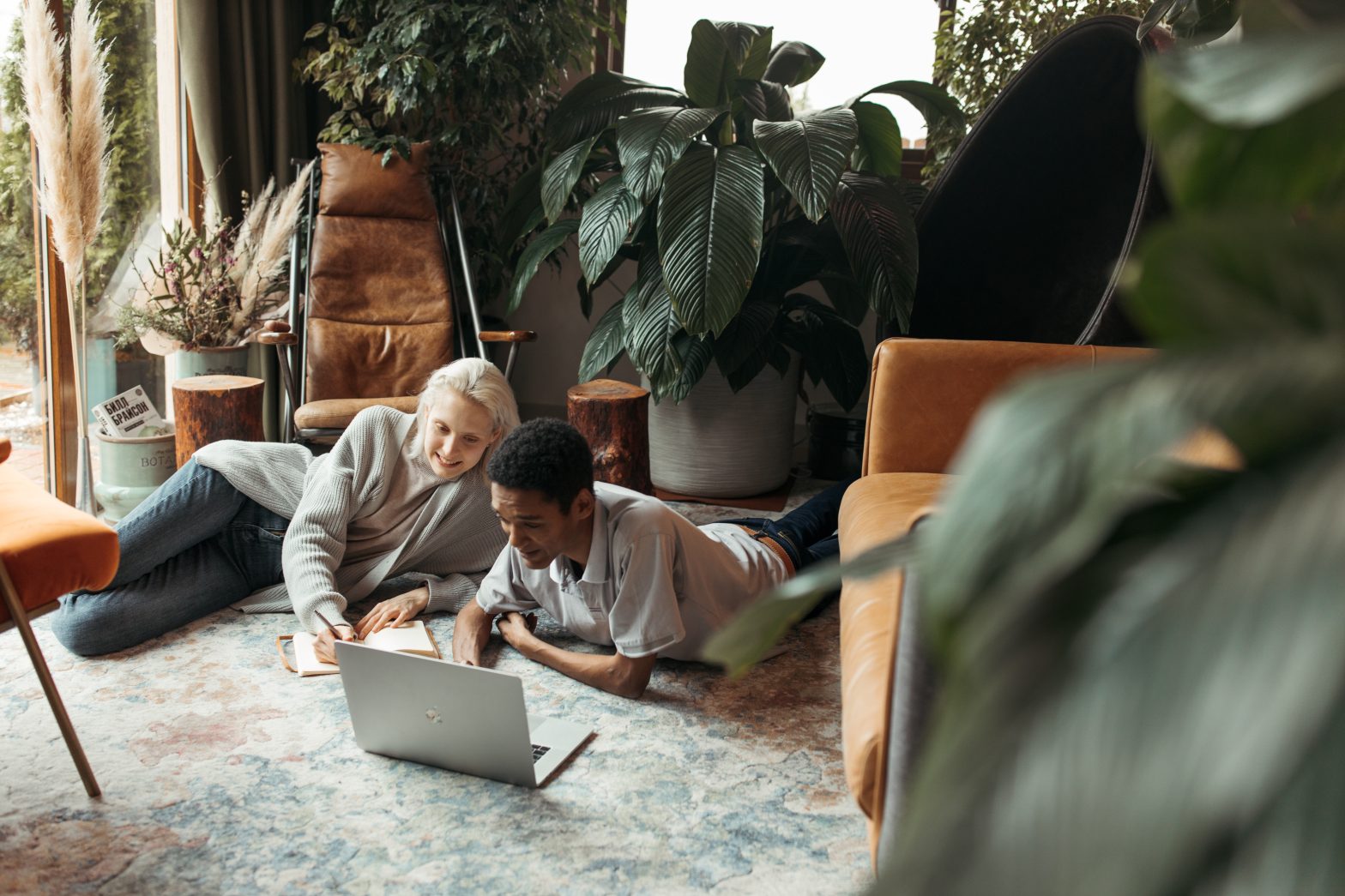Culture is a foundational element of any company, and when successful, it’s a key indicator of a brand’s longevity. And as much as companies may extoll their values and seek to connect employees to their mission, company culture typically takes root in a physical place: the office. Certainly Silicon Valley has led the way with signature spaces filled with cushy perks as a way to encourage employee engagement and connection (and let’s face it, having a hip headquarters conveys crucial bragging rights, too). But what, exactly, replaces the “glue” that binds people together when, thanks to COVID-19, gatherings might not be such a regular occurrence—well, that’s a key question companies are grappling with right at this moment.
There’s definitely a valid argument that offices should shift to more flexible hybrid models, with workspaces serving primarily as innovation stations rather than work zones. The idea is that employees come together for a purpose, and companies allocate more space for brainstorming and teamwork than cubicles. That’s one big concept driving the design decisions of Los Angeles-based XTEN Architecture’s new offices, which are on their drafting tables now. “Our current conference room is a bit of a glass box and has the worst circulation in our office,” says president and co-founder Monika Haefelfinger. “Especially in light of COVID-19, we want a new conference space that feels more like you’re at a picnic, with air moving all around, plus the ability to control the light and the temperature. It’s the most important area we’ve reimagined.” When surveyed, the firm’s employees also made it clear that they didn’t desire more desks. “We’ve realized our team sees our office more as a hub, so the free-flowing concept we’re toying with is about how it can become a better support space for everyone,” Haefelfinger says.
What XTEN is considering for their physical office space is a twist on a spatial rethink other companies are exploring as well: the “hub-and-spoke” model. This refers to retaining a central headquarters as the “hub” while also leasing or establishing smaller offices or coworking spaces as the “spokes,” placing offices closer to commuters while reducing the square footage of the offices overall. Offering compact spaces for fewer workers in these spokes could be less expensive and easier than leasing a larger space in a major downtown area. The company MotoRefi, an auto loan financer, is transitioning to this kind of system by keeping a main 50-person office hub in Washington, D.C. and opening new spokes in Denver and Austin next year. Deloitte is reportedly considering a version of this idea too. And then there’s REI’s surprising decision to sell its newly completed and nearly unused 8-acre corporate campus in favor of flipping to a satellite-based concept, a similar shakeup.

Major changes to actual physical spaces do take time, though and may trigger a massive restructuring. Many companies hoped to return workers to the office this fall, but due to lingering uncertainty around the coronavirus, a new poll of C-suite executives by the Conference Board found that a whopping one-third of executives and managers still don’t know when their companies will reopen. So more immediately, forward-thinking companies are making a concentrated effort to continue and consolidate their company culture digitally while they make a determination about the use of their existing offices. It’s a critical move, as some high profile employers like Google and Amazon corporate have already announced that they don’t intend to re-open their offices until 2021; others like Twitter, Facebook and Square informed workers that they don’t necessarily ever need to return. But as human interactions are the drivers of innovation—the concept of Google News, for instance, famously resulted from two engineers talking in line—finding safe spaces that foster these moments of employee “collisions” is still incredibly important.
GIPHY is one highly collaborative company that has nimbly chosen to continue its unique brand of corporate culture online as a workaround to a closed office. The company’s New York City and Los Angeles headquarters are hip hangouts with animated walls alive with GIFs and plenty of encouragement for informal get-togethers, like at the L.A office’s regular 2pm snack time. Now, ultra-niche themed Slack rooms dedicated to everything from at-home workouts to TikTok videos have replaced those snack-time chats. The company also co-opted Google Hangouts and Zoom not only for meetings, but for fun. “Our regular Trivia Night is the stand-out winner for a morale boost for GIPHY,” says office manager Dawnie Jefferson. “We have it set up via Zoom with breakout rooms, plus families, significant others and roommates are welcome to play, and people can trash talk—nicely, of course.”
Providing employees with a place to playfully tease each other may seem inconsequential, but from a cultural standpoint, it’s a savvy strategy. In a June survey of 1,000 working Americans by TELUS International, small talk was ranked as one of the top things that employees missed the most about going to an office. A recent study published in The Academy of Management Journal also indicates that the social ritual of office chit-chat can have an uplifting effect, increase positive emotions and add to workers’ general sense of well-being.
From hirings to firings, layoffs, furloughs and leadership changes, it’s fair to say that all the normal issues that companies face have been additionally strained by fallout of the COVID-19 health crisis. “The current situation is forcing organizations to be more thoughtful, and likely more transparent, than they’ve been in the past,” says Jennifer Marszalek, a senior HR leader who’s worked with Havas, Grubhub and several other tech and start-up companies. Especially as toxic work environments have drawn headlines lately—The Ellen DeGeneres Show is facing allegations of gender discrimination, sexism and racism, and Bon Appetit is on blast for accounts of unequal compensation and for discouraging diversity—taking an unfiltered read of a company’s overall pulse, culture and values has never been so imperative.
“Toxic environments don’t need the four walls of an office to flourish,” Marszalek adds. “The grapevine can be detrimental when it runs rampant through an office, but it can be even more damaging when employees work remotely, because you don’t realize what offline communication may be happening.”
The pros of physical presence and person-to-person interaction—no matter how exactly workspaces look in the near future—still outweigh the cons. And for that reason alone, the countless contributions offices offer for company culture will likely never render these key spaces obsolete. And finding worthwhile ways to continue to come together safely is something that Mike Cassidy, the General Manager of California Closets, continues to stand firmly behind, even as his Huntington Beach headquarters has transitioned to a 50/50 half-remote, half in-office model.
For him, that means donning a mask to show up in person every day at “the yard,” the outdoor area where the company’s 39 installers are dispatched, where he greets his team and hands out PPE. He hasn’t missed a morning in four months, a pattern he’s committed to continuing. “It might be the most important thing I do each day,” he says.


